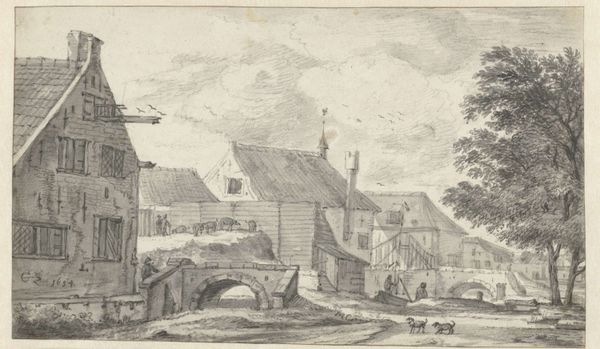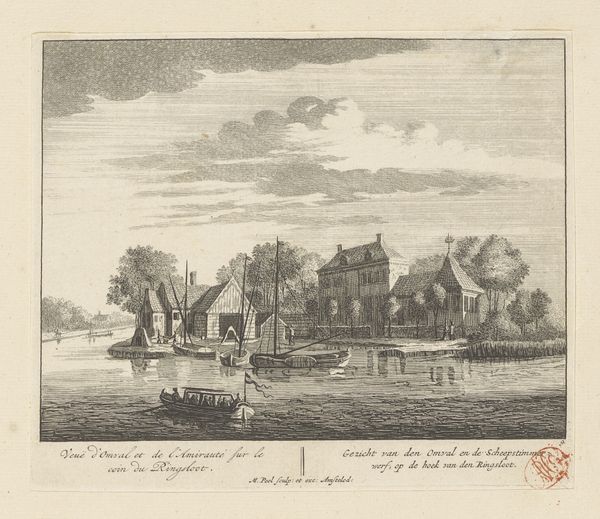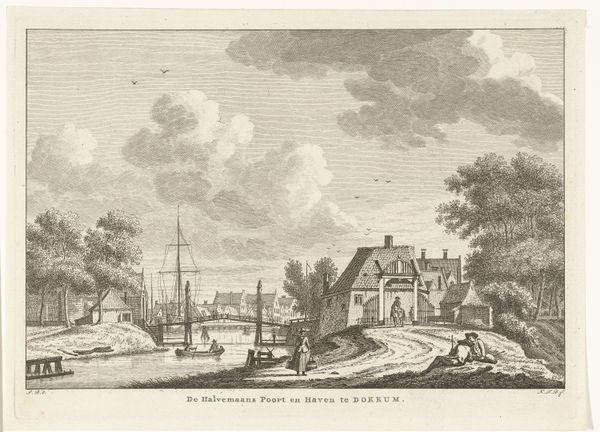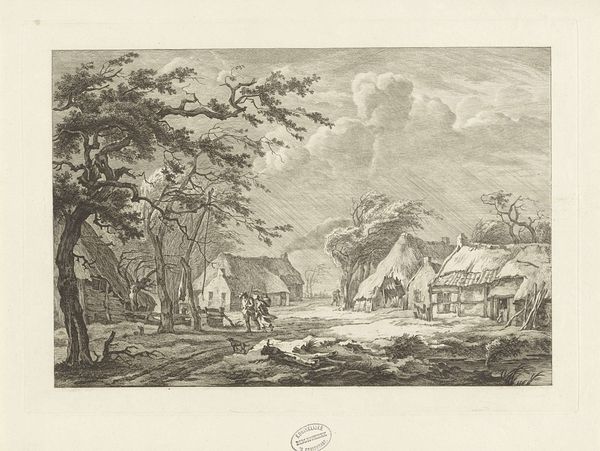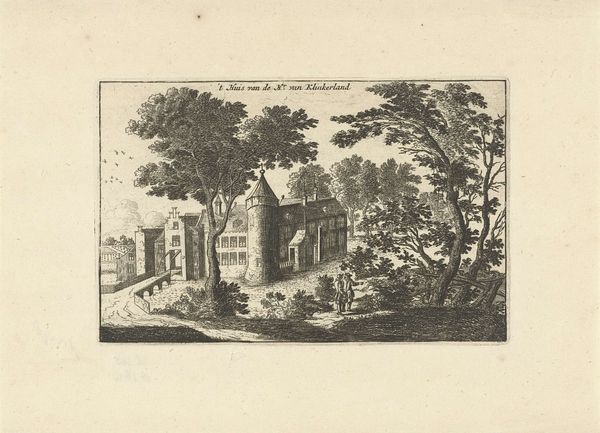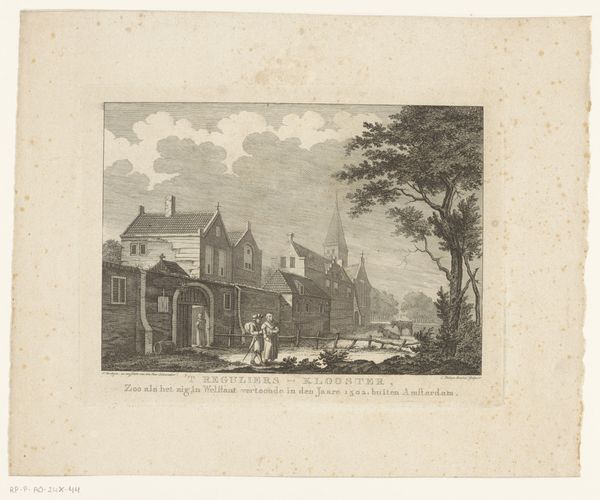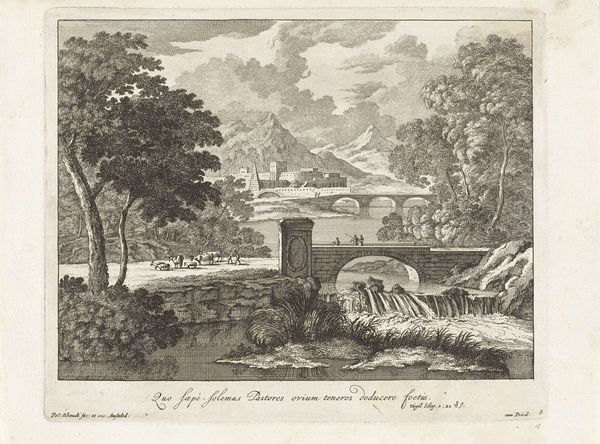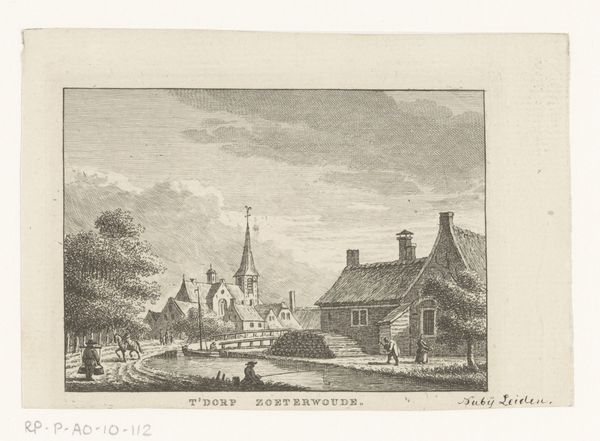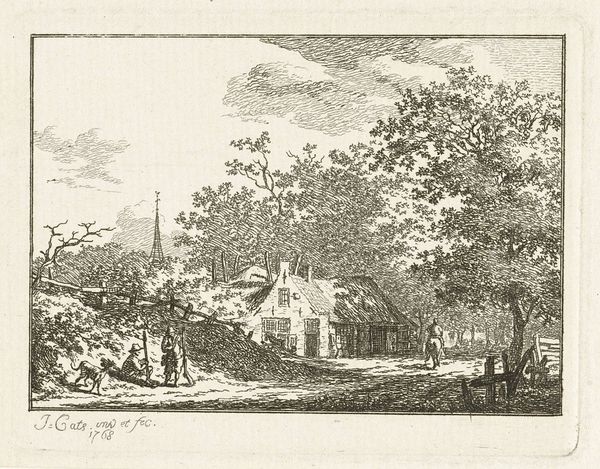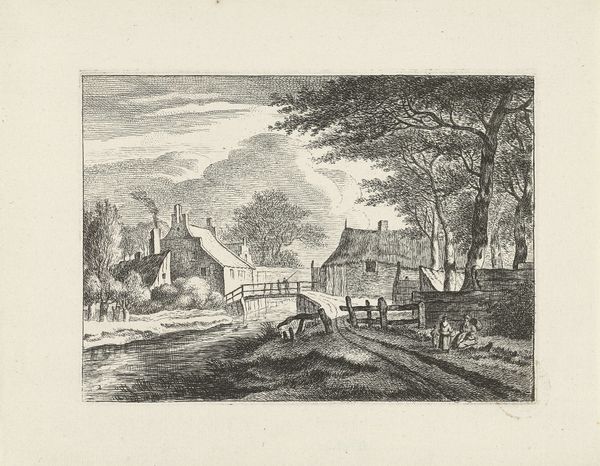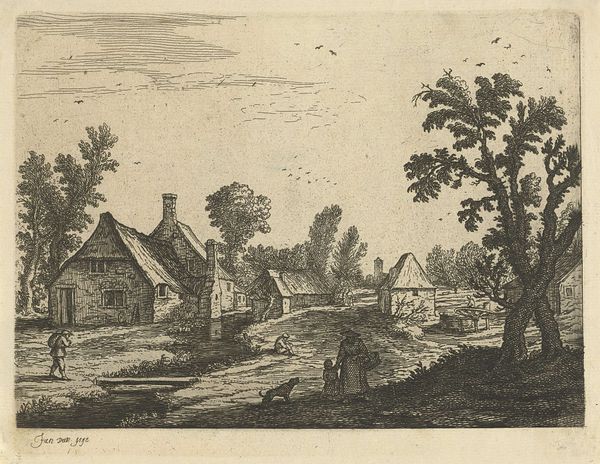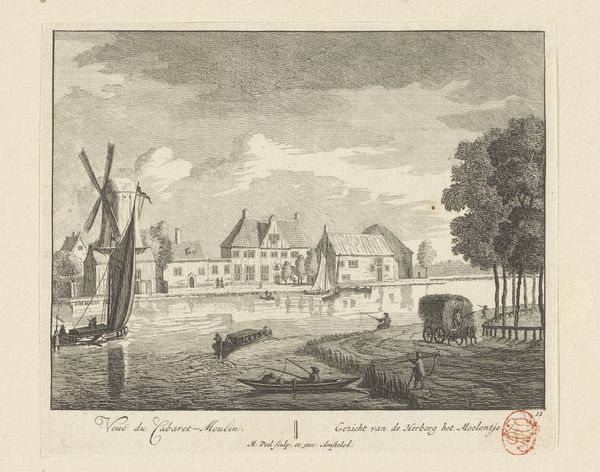
print, engraving
#
dutch-golden-age
# print
#
old engraving style
#
landscape
#
cityscape
#
history-painting
#
engraving
Dimensions: height 169 mm, width 222 mm
Copyright: Rijks Museum: Open Domain
Caspar Jacobsz. Philips made this etching of Het Reguliersklooster outside Amsterdam in the late 18th century. It represents an image of the cloister as it looked in 1502. The Dutch Republic, where Philips lived, was undergoing significant cultural and political changes. This print participates in an emergent nationalism and nostalgia for the past, as well as a developing artistic interest in landscape. As the image purports to show the landscape as it looked nearly three centuries prior, it speaks to the ways that history is constructed as a narrative of power and identity. The cloister is depicted as a place of both religious devotion and human activity, and it prompts us to consider the role of such institutions in shaping Dutch culture and identity. This image presents a romanticized, distant vision of the Netherlands. What stories are excluded from this representation of Dutch society? What kind of emotional connection does the image make with its viewers?
Comments
No comments
Be the first to comment and join the conversation on the ultimate creative platform.
